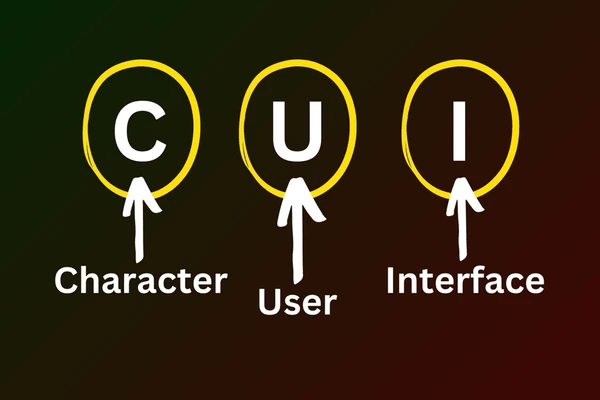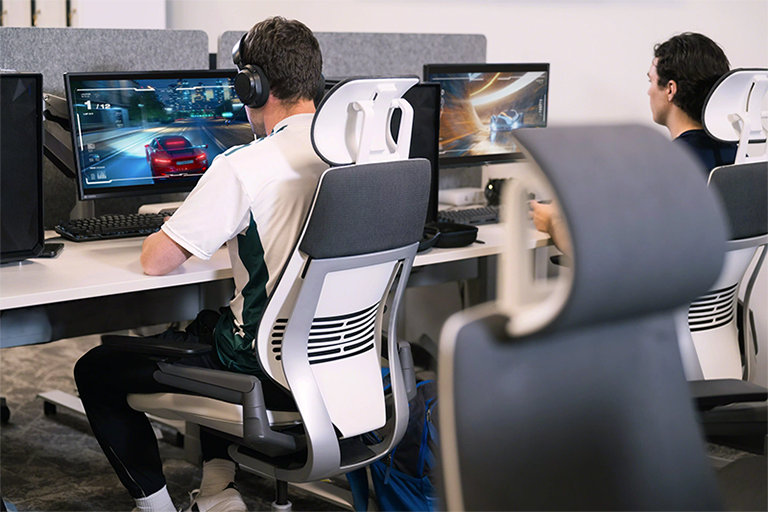Understanding the Character User Interface (CUI)
When people talk about interacting with computers, the first things that come to mind today are touch screens, colorful icons, or voice assistants. However, long before these advanced methods, the computer world relied on a simpler yet powerful approach known as the character user interface, often shortened as CUI. This method depends entirely on characters typed from a keyboard, making it one of the earliest and most essential forms of communication between humans and machines.
What is a Character User Interface?
A character user interface is a system where all interactions happen through text and symbols typed on a keyboard. Instead of clicking with a mouse or tapping a screen, the user types specific commands or chooses options represented by characters. The computer responds with text-based messages, menus, or lists.
For example, if you want to copy a file, you would type a command rather than drag and drop it with a mouse. This might feel restrictive today, but for decades it was the standard method of using computers.
The main feature that separates CUI from other methods is its reliance on keyboard input only, without any graphical elements like buttons or icons.
The Role of the Keyboard in CUI
The keyboard is the central tool in a character user interface. Every action—whether it is opening a file, editing a document, or running a program—requires the user to press keys in a particular sequence. Unlike modern systems that give users multiple ways to perform a task, CUI expects precise and accurate input.
This strict requirement might seem like a disadvantage, but it offers significant control. Users who master command syntax can perform complex tasks much faster than navigating through menus with a mouse.
Early Days of Computing and CUI
In the early decades of computing, monitors were not designed to display graphics or images. They displayed plain text, usually in green or white letters on a black background. Under those conditions, the character user interface was not just an option; it was the only possible way to communicate with the machine.
Operating systems like MS-DOS or UNIX shells were classic examples where users had to memorize commands to operate their systems. Programmers, administrators, and technical experts grew comfortable with these environments because they offered direct and efficient access to the machine’s capabilities.
Key Features of a Character User Interface
To understand why CUI was so popular and why it still exists in certain areas, it is useful to look at its key characteristics:
- Text-based interaction – Everything depends on characters, symbols, and keyboard input.
- High precision – Commands must be typed correctly to work. Small mistakes often result in errors.
- Speed for experts – Once users master the commands, tasks can be completed quickly without navigating through multiple screens.
- Low system requirements – Since CUI does not need graphics or heavy processing, it can run on very limited hardware.
- Simplicity in design – The interface itself is minimal, focusing only on function rather than appearance.
Advantages of Using a Character User Interface
Despite its limitations compared to modern systems, CUI has clear benefits:
- Resource efficiency: It consumes very little memory and processing power, making it ideal for older or lightweight machines.
- Direct control: Users can perform powerful tasks directly without hidden processes running in the background.
- Speed in execution: For professionals who know commands, operations are faster than navigating through multiple graphical windows.
- Stability and reliability: Many character-based systems are known for being extremely stable and less prone to crashes compared to heavy graphical environments.
Limitations of the Character User Interface
On the other hand, there are obvious challenges:
- Learning curve: Beginners may find it difficult to remember and use commands.
- No visual feedback: Without icons or images, the interface feels less intuitive.
- Error-prone: A single typo can prevent a command from running.
- Limited accessibility: People unfamiliar with keyboard shortcuts or commands may struggle to use it effectively.
Character User Interface vs Graphical User Interface
The rise of the graphical user interface (GUI) changed the way most people use computers. With icons, windows, and pointing devices like the mouse, computing became more accessible to the general public.
Comparing the two highlights their differences:
- CUI: Relies on typing commands, requires precision, but gives advanced control.
- GUI: Relies on visual elements, easier for beginners, but sometimes slower for experts.
In essence, CUI focuses on function and efficiency, while GUI emphasizes usability and design.
Examples of Character User Interfaces
Some well-known examples include:
- MS-DOS: One of the most famous text-based systems used widely before Windows became dominant.
- UNIX and Linux shells: Even today, administrators use terminal windows to manage servers.
- Command Prompt and PowerShell in Windows: Still available for advanced users who prefer character-based commands.
These examples prove that even though the graphical interface has taken over mainstream computing, character user interfaces still play a vital role in certain environments.
Why CUI Still Matters Today
It may seem outdated, but the character user interface remains relevant in specific situations:
- System administration: Managing servers often requires command-line tools.
- Programming and development: Many development environments depend on command prompts or terminals.
- Automation: Scripts written in text commands can automate repetitive tasks more effectively.
- Remote access: In low-bandwidth environments, text-based interfaces are more efficient than graphical ones.
The Learning Experience with CUI
One important benefit of learning to use a character user interface is gaining a deeper understanding of how computers work. By typing commands manually, users develop problem-solving skills and an appreciation for the logic behind computing.
For beginners, it might feel intimidating, but once the basics are mastered, the efficiency becomes clear. This is why many universities and training programs still introduce students to command-based systems before moving on to advanced graphical tools.
The Future of Character User Interfaces
Although technology continues to advance toward artificial intelligence, voice recognition, and augmented reality, character user interfaces are not disappearing. Instead, they coexist with modern systems.
Many professionals prefer them for specific tasks where precision, speed, and reliability are more important than visuals. In fact, as cloud computing and remote management grow, text-based tools remain critical.
The future might not be dominated by CUI, but it will always have a place as a reliable and efficient option.
Conclusion
The character user interface represents one of the oldest yet most influential ways of communicating with computers. Its reliance on keyboard input, precision, and simplicity shaped the foundation of modern computing.
While it has been largely replaced in everyday use by graphical systems, its importance remains undeniable. Professionals in programming, system management, and automation continue to rely on it for control and efficiency.
Learning about CUI not only helps us appreciate the history of computing but also reminds us that sometimes, the simplest methods can be the most effective.





